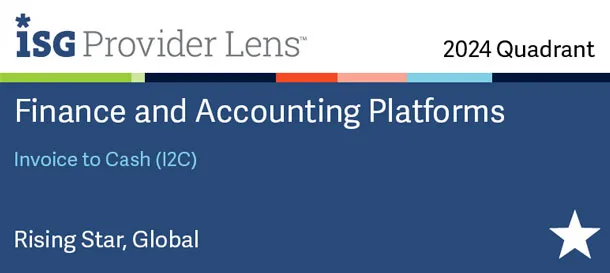Before the accounting cycle is finished, the accounting and finance teams analyze account balances as part of the financial close process. It includes documenting and carefully reviewing all journal entries for transactions and activities, confirming the accuracy of the data through the assessment of the balance sheet and account reconciliations, and resolving high-risk transactions.
After all the planning, reviewing, and research, the financial close’s main goal is to produce financial statements. In this reporting phase, financial statements are produced after being consolidated and reviewed for conformity with appropriate criteria. The financial closing process’s final crucial phase is represented by this.
What is Financial Close & Closing the Books
The financial close is the culmination of all routine financial and accounting operations carried out by a corporation. As a result, just one part of the financial close is represented by the act of closing the books.
What are the Financial Close Process Steps?
- Recognize transactions and write them down in a journal.
- Add to the general ledger
- Create a trial balance without adjustments
- Tally up the debits and credits
- Make adjustments to your journals
- Run a trial balance adjustment and financial statements
- Create financial reports and close the books

Management of the company uses the financial statements produced by the financial closure for analysis, comparisons, KPI development, and other evaluations of the financial health of the organization. These statements may also be used by regulators, lenders, and investors; depending on the business, it may be necessary to make these statements available to those parties.
The 4 Steps in the Closing Process
Before the accounting cycle is over, it is required to analyze account balances and minimize or eliminate temporary accounts in order to finish the financial closing procedure. The four actions needed to accomplish this goal are as follows:
- Close all revenue accounts and transfer funds to the temporary income summary account
- Integrate expense accounts with the income statement
- A close comparison of income and retained profits
- Close dividends to retained earnings
What are the Financial Close Challenges?
Teams in midmarket organizations face complex worldwide accounting difficulties, necessitating the need to streamline and automate their accounting processes in order to successfully meet these demands.
There are 6 Financial Close Challenges:
- More speed: Speeding up the financial closing process puts a strain on trying to execute the task correctly while also finishing it swiftly. Accounting teams can complete the task of closing the books more quickly when they have quick access to important financial data.
- Missing data: When trying to find and correct inaccurate data, such as duplicate entries, missing invoices, unrecorded payments, or calculation errors, it can take time and effort.
- Disparate systems: Since not all transactions from every business unit may be adequately documented in one single area, combining data from several systems can also be difficult. Local accounting systems are common in businesses with several operating divisions, however, they sometimes don’t work well with the primary system at the corporate headquarters. Disparate systems can slow down the creation of consolidated financial statements by raising the possibility of errors, increasing closing issues, and reducing the productivity of the accounting staff.
- Remote teams: Teams that operate remotely can be dispersed and include data specialists.
- Manual errors: For accountants, the closing process is one of the least pleasurable parts of the profession due to a mix of tight deadlines and monotonous activities. For instance, accountants can spend hours or even days merely transferring numbers and double-checking computations, with the likelihood of errors rising as the amount of human data entry used in the financial close process increases.
- Teams not supported enough: A continuous close may not be possible for some firms, which may instead rely on antiquated batch systems, labor-intensive manual procedures, and paper records. Inadequate support might start a negative cycle that consumes more time and effort and results in delayed information.
As a result, some businesses could be reluctant to invest in data and related processes that they view as being ineffective. Employees may purposefully or accidentally neglect crucial procedures to speed up the process, which puts a significant burden on staff and raises the risk of errors.
5 Common Financial Close Process Problems
- The process lacks organization: Due to the fact that many accountants are familiar with the closing procedures and have carried them out consistently for a long time, it is believed that rigid standard operating procedures (SOPs) are unnecessary. However, just because someone knows how to accomplish something doesn’t mean that there isn’t room for improvement.
- The process lacks automation: The longer it takes and the more room for error there is in the financial close process, the more jobs must be done manually. Relying on human processes is less necessary thanks to automation and accounting software.
- The process lacks complete data: Compiling data from throughout the firm is necessary for closing, which can quickly turn chaotic if transaction data is incomplete. If not filed in accordance with company procedures, instances such as missing purchase orders, invoices, and expense reports may result in incorrect account balances. In contrast, inadequate data makes the accounting staff less effective and wastes time while searching for crucial information during the financial close process.
- Rushed process: The accounting team may concentrate on more value-added tasks and stakeholders can receive financial statements for historical analysis sooner if the financial close procedure is completed as soon as possible. However, this does not excuse rushing things. The final product of the financial close, the financial statements, typically serves as the company’s public face, and errors could damage the company’s reputation.
- The process lacks integration: Information merging is required when the data required to complete the financial closing process is dispersed among several systems. However, this process might result in more errors and slower financial closure times.

7 Ways to Improve Financial Close
Improving financial close processes gives decision-makers like CEOs quicker access to crucial financial data. Organizations can spend more time reviewing operations, reallocating resources, and determining whether they have the money to take advantage of new opportunities by spending less time closing. The following seven steps can be used to enhance the financial closing process:
- Determine inefficiencies: Determine the process’s bottlenecks and inefficiencies.
- Create and keep SOPs (standard operating procedures): Create a detailed and concise SOP for each person or team taking part in the closure process.
- Open access to information: By giving accounting teams immediate access to the databases that store data, you may lessen the dependency on updates from other departments.
- Document comprehensively: Make sure that every piece of information is recorded and accounted for by creating a journal entry checklist that must be followed each month.
- Reduce data entry: To minimize data entry errors, stay away from paper and spreadsheets whenever you can.
- Use ongoing accounting techniques: Distribute the workload throughout the entire month by incorporating daily tasks like posting diary entries and account reconciliation into your schedule.
- Hold post-close meetings: In timely post-close meetings, review issues, monitor KPIs, and discuss subjects that could help the organization enhance its subsequent close cycle.
The Future of the Financial Close
Utilizing financial technology that streamlines and optimizes the process is essential for improving the month-end close procedure, just like it is in any other sector. With many automation software alternatives on the market, choosing the best platform can be difficult. However, it is essential to start looking into and finding appropriate software solutions given the growing trend toward process automation.
Make the Financial Close Process Easier with Emagia AI-Powered Solution
Businesses can improve their processes and devote more time to high-value tasks like financial analysis and forecasting by using the right business accounting software, such as cloud-based financial management software that integrates seamlessly with ERP systems.
The length of the financial close cycle can be shortened by integrating modern corporate accounting software into an integrated ERP system, freeing up accounting experts to concentrate on more important activities like financial planning and analysis rather than always playing catch-up.
Conclusion:
To sum up, the financial close procedure is an essential part of any business’s accounting activities. It entails a number of duties that guarantee the quality and completeness of financial accounts, and it gives stakeholders crucial information for making decisions.
Businesses can spend less time and money on the financial close and concentrate on more important tasks that promote growth and profitability by using accounting software and processes. Businesses can improve their financial performance and reach their long-term objectives by consistently enhancing the financial closing processes.
FAQs
What is the Financial Close of the Project?
Financial close is the point at which the PPP contract has been signed, and all prerequisites for financing have been satisfied.
How Long Does Financial Closure Take?
It takes about 6-8 days.
Why is the Financial Close Process Important?
It provides an accurate record of financial activities for a specific accounting period that is used as the basis for decision-making by numerous stakeholders.
How do You Close Books for a Financial Year?
You have to zero out expense accounts and incorporate net profit into the balance sheet.
What Does It Mean When You Close the Books?
In order to prepare reports like income statements and balance sheets, they approve and confirm the data.









